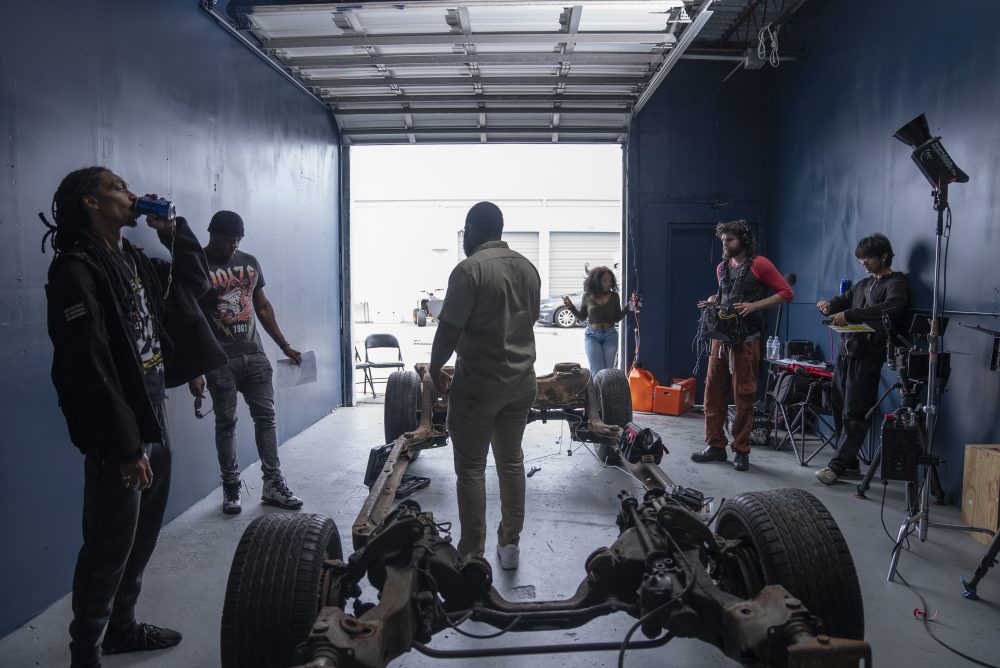
The 7 Stages of Filmmaking in a Film Production
The 7 Stages of Filmmaking in a Film Production
Filmmaking is a complex and intricate process that involves several stages, each crucial for bringing a story to life on screen. Understanding the seven stages of filmmaking in a film production can provide insight into the creative and technical aspects of crafting a movie. Whether it’s a short film, independent feature, documentary, or major motion picture, filmmakers follow a structured workflow to navigate through these stages effectively.
 Development: The first stage of filmmaking is development, where the initial idea or concept for the film is conceived and refined. This stage involves brainstorming, story ideation, scriptwriting, and concept development. Writers, directors, and producers collaborate to create a compelling narrative, develop characters, outline story arcs, and establish the thematic elements of the film. Research, concept pitches, script revisions, and feedback sessions are integral to shaping the creative vision and laying the groundwork for production.
Development: The first stage of filmmaking is development, where the initial idea or concept for the film is conceived and refined. This stage involves brainstorming, story ideation, scriptwriting, and concept development. Writers, directors, and producers collaborate to create a compelling narrative, develop characters, outline story arcs, and establish the thematic elements of the film. Research, concept pitches, script revisions, and feedback sessions are integral to shaping the creative vision and laying the groundwork for production.- Pre-Production: Once the script is finalized, the pre-production stage begins, focusing on planning, organization, and logistics before filming begins. This stage involves assembling the production team, conducting casting auditions, scouting locations, securing permits, designing sets, creating storyboards, scheduling shoots, and preparing budgets. Production meetings, script breakdowns, rehearsals, costume fittings, and equipment tests are conducted to ensure that all elements are in place for a smooth production process.
- Production: The production stage is where the actual filming of the movie takes place. This stage involves coordinating crew members, actors, and technical resources to capture scenes according to the script and storyboard. The director works closely with the cinematographer, camera operators, lighting technicians, sound engineers, and other crew members to execute the creative vision, frame shots, light sets, record audio, direct performances, and capture footage on camera. Multiple takes, scene setups, and camera angles are used to achieve desired visual and narrative effects.
- Post-Production: After filming wraps, the post-production stage begins, focusing on editing, visual effects, sound design, and overall refinement of the film. Editors assemble raw footage, trim scenes, sequence shots, add visual effects, enhance audio quality, and synchronize sound and visuals. Color grading, special effects, CGI, animation, and title sequences are integrated to enhance the visual appeal and storytelling impact. Sound designers, composers, and musicians create original scores, soundscapes, and sound effects to enhance mood, tension, and emotional resonance.
- Screening and Feedback: Once the post-production work is completed, the film undergoes screenings and feedback sessions to gather input from test audiences, industry professionals, and stakeholders. Screenings may include focus groups, private screenings, festival submissions, and industry previews to gauge audience reactions, assess storytelling effectiveness, identify areas for improvement, and make final adjustments. Feedback sessions inform final edits, pacing adjustments, sound enhancements, and overall fine-tuning before the film’s official release.
- Marketing and Promotion: As the film nears its release date, marketing and promotional efforts ramp up to create buzz, generate excitement, and attract audiences. Marketing strategies include trailers, teasers, posters, press releases, social media campaigns, interviews, premieres, and promotional events. Publicity tours, media coverage, interviews, and reviews help build anticipation and visibility for the film, reaching a wider audience and driving ticket sales or digital views.
- Distribution and Release: The final stage of filmmaking is distribution and release, where the film is distributed to theaters, streaming platforms, broadcast networks, or DVD/Blu-ray distributors for public consumption. Distribution deals, licensing agreements, and marketing campaigns determine the reach and availability of the film to audiences worldwide. Box office performance, viewer ratings, critical reviews, awards, and audience feedback contribute to the film’s success and long-term impact.
Each stage of filmmaking in a film production requires collaboration, creativity, attention to detail, technical expertise, and effective project management. Filmmakers navigate through these stages with dedication, passion, and perseverance to bring their vision to fruition and connect with audiences through the art of storytelling on screen. Whether it’s a blockbuster hit, indie gem, documentary masterpiece, or experimental film, the seven stages of filmmaking form the foundation for cinematic storytelling and creative expression.




 Development: The first stage of filmmaking is development, where the initial idea or concept for the film is conceived and refined. This stage involves brainstorming, story ideation, scriptwriting, and concept development. Writers, directors, and producers collaborate to create a compelling narrative, develop characters, outline story arcs, and establish the thematic elements of the film. Research, concept pitches, script revisions, and feedback sessions are integral to shaping the creative vision and laying the groundwork for production.
Development: The first stage of filmmaking is development, where the initial idea or concept for the film is conceived and refined. This stage involves brainstorming, story ideation, scriptwriting, and concept development. Writers, directors, and producers collaborate to create a compelling narrative, develop characters, outline story arcs, and establish the thematic elements of the film. Research, concept pitches, script revisions, and feedback sessions are integral to shaping the creative vision and laying the groundwork for production.

